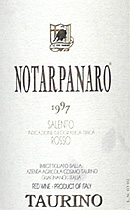|
When it pays to age a wine
But then in Wednesday's edition I offered tasting notes on a couple of $10 Bordeaux, describing one as "tannic," and the other as improving with time in the glass. A few of you wrote me about this, saying, "Hold on! Those sound like wines that do improve with age." One writer, a fellow Kentuckian, asked, "With inexpensive Bordeaux like this that is a bit tannic, would it improve them if they are held for an additional 1 to 3 years before drinking?" Well, maybe. While it's true that most wines don't benefit from age - particularly in modern times, when most producers encourage quick gratification by making even their ageworthy items in a style that invites immediate consumption - some modest wines will last, and even improve, if they're stored with care. As I told one reader, the problem is that this sort of thing can be hard to predict. But here's a formula that may help you recognize the wines that will last: If a wine shows the combination of perceptible tannins (which manifest themselves as a puckery astringency) along with sufficient fruit and a good balance of acidity, it stands a reasonable chance of showing some improvement with time. The evolution of wine in the bottle is a mysterious chemical process that involves such technical matters as reduction, oxidation and the polymerization of tannins, but the short of it is that ageworthy wines gain texture and complexity as these chemical changes occur.) Bear in mind, however, that storage conditions are a critical variable in aging wine. Assuming that a wine has aging potential, its evolution will vary significantly in terms of both speed and ultimate quality, depending on how it is stored. Three years is probably safe for a robust red stored on its side under normal home air conditioning, kept away from heat sources and bright sunlight. But five years or more is iffy unless the wine is kept in a temperature-controlled cellar at a constant 55F (13C). And exposure to excessive heat - indoor summer highs rising into the 80s F or above - can significantly shorten your wine's life expectancy. The good news is that when you're experimenting with $10 wines, it doesn't cost much to experiment. Next time you open a good, sturdy and reasonably priced red wine that meets the aging criteria I've listed, pick up another bottles - or even two or three - and put them aside in a safe place. Pull a cork a few years later, and see for yourself what time does to your wine. Finally, I've said this before, and probably will again: If you want a quick guide to the aging potential of many wines, Hugh Johnson's Pocket Wine Book 2003 (pictured above, if you're reading our HTML/graphics edition) is a valuable resource. This small volume lists thousands of wines from around the world in tiny print, with brief descriptions that include Johnson's opinion about which vintages are ready to drink and which need more time.
The following link will take you to a description of the book on Amazon.com. If you use this link to buy, we'll earn a small commission at WineLoversPage.com: Now, let's take a look at today's wine, a favorite from Southern Italy that would likely benefit from a few years in the cellar - or on your wine rack.  Taurino 1997 "Notarpanaro" Salento Rosso ($12.99)
Taurino 1997 "Notarpanaro" Salento Rosso ($12.99)
Very dark reddish-purple. Ripe and plummy black-fruit aromas with hints of fennel. Full flavor carries out the black-fruit theme, warm and a bit simple, framed by lemony acidity and an astringent edge of tannins. It opens up with time in the glass, showing more layered fruit and a smooth texture, suggesting that a few years of age won't hurt and might help. U.S. importer: Winebow Inc., NYC; Leonardo Locascio Selections. (Dec. 30, 2002) FOOD MATCH: It needs a hearty match, and found it in a quick pasta dish made with chopped leftover roast beef with red bell peppers and tomatoes over fusilli. VALUE: Competitive at its price level, and the patient will enjoy the added benefits of age.
WEB LINK: The importer's has a Notarpanaro fact sheet here: To subscribe or unsubscribe from The 30 Second Wine Advisor, change your E-mail address, switch from weekly to daily distribution, or for any other administrative matters, click to http://www.wineloverspage.com/wineadvisor/admin.phtml. In all administrative communications, please be sure to include the exact E-mail address that you used when you subscribed, so we can find your record. If you must unsubscribe, please take a moment to tell us why you're leaving, and to offer any comments or suggestions you may have. We do not use our E-mail list for any other purpose and will never give or sell your name or E-mail address to anyone. I welcome feedback, suggestions, and ideas for future columns. To contact me, send E-mail to wine@wineloverspage.com. All the wine-tasting reports posted here are consumer-oriented. In order to maintain objectivity and avoid conflicts of interest, I purchase all the wines I rate at my own expense in retail stores and accept no samples, gifts or other gratuities from the wine industry.
Friday, Jan. 17, 2003 |





